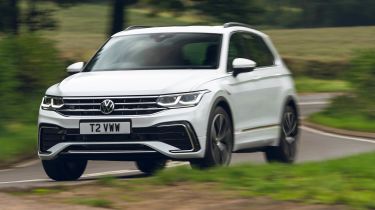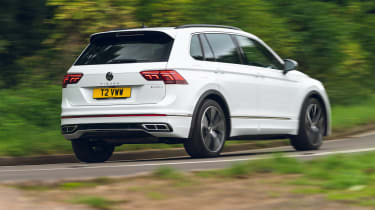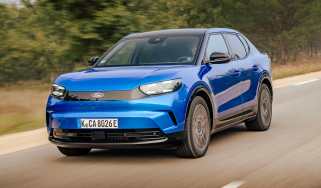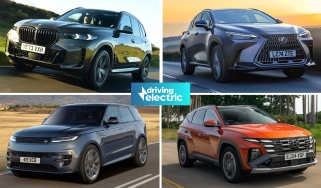Volkswagen Tiguan eHybrid review
The plug-in hybrid VW Tiguan is comfortable and great to drive, while its efficiency numbers will appeal to business users
Pros
- Relaxing to drive
- Proven plug-in powertrain
- 30-mile electric driving range
Cons
- Reduced boot space
- Not much fun to drive
- Lethargic gearbox
| Car type | Electric range | Fuel economy | CO2 emissions |
|---|---|---|---|
| Plug-in hybrid | 30 miles | 157-177mpg | 38-43g/km |
The plug-in hybrid version of the hugely popular Volkswagen Tiguan SUV, known as the Tiguan eHybrid, was released in 2021. The Tiguan eHybrid is the German brand’s entry into the increasingly crowded plug-in hybrid family SUV class, facing very strong competition from the similarly electrified versions of the Ford Kuga, Hyundai Tucson, Kia Sportage and Toyota RAV4.
The Tiguan eHybrid shares its powertrain with the GTE versions of the Volkswagen Golf and Volkswagen Passat – which means under the bonnet there’s a turbocharged 1.4-litre petrol engine paired with an electric motor and a 13kWh battery. Combined power output is a healthy 242bhp, 0-62mph takes 7.5 seconds and the Tiguan hybrid is also capable of driving a decent 30 miles in electric mode – although in colder weather our car showed 25 miles on a full battery.
As you'd expect, the Tiguan eHybrid returns impressive official CO2 emissions, which range from 38-43g/km depending on trim level and wheel size. That means the Tiguan is likely to hold particular appeal for company-car drivers due to its resulting low Benefit-in-Kind tax rating. Fuel economy is quoted at between 157 and 177mpg, and while that's theoretically possible with a fully charged battery and lots of electric-only driving, we think the plug-in hybrid family hauler will return around 35mpg once the electric range has been depleted.
The entire Tiguan range got a styling refresh in late 2020, in an attempt to keep pace with ever-slicker rivals like the bold Hyundai Tucson and Kia Sportage. Styling tweaks included a new front-end treatment, new bumpers and new head and tail-lights to help maintain some family resemblance with the latest Golf, yet it all looks broadly similar to before.
Inside, there’s a steering wheel with touch-sensitive buttons, along with a new digital-dial setup. A new 8-inch central infotainment screen also features, with higher-spec models also featuring a 10.25-inch digital driver’s display. Elsewhere, a number of physical controls, including those for the heater, have been replaced by touch-sensitive equivalents.
There's space in the back for three adults and the boot is well shaped, even if the battery does rob 139 litres from the standard car's figure, leaving a respectable 476 litres. The plug-in Tiguan will also appeal to company-car drivers thanks to an 12% Benefit-in-Kind (BiK) tax rate – around a third of what a diesel version attracts.
The Tiguan eHybrid also handles the transition from electric to petrol power quite smoothly, unlike some other plug-in hybrids, and offers decent performance. But the car is seriously let down by a lethargic gearbox, which is extremely slow to kick down when overtaking, or to engage when pulling away.
We also found the ride harsh in our R-Line test car, but we suspect that was down to its 20-inch alloy wheels. The smaller rims on the entry-level Life version may improve things, but even on the bigger wheels, the Tiguan's refinement is impressive for a car in this class.
While the Tiguan eHybrid will appeal to company-car drivers and those looking for a stepping stone towards their first electric car, its powertrain isn’t as accomplished as its rivals, and its £37,000 starting price is relatively high, preventing it from becoming a class leader. For a more detailed look, read on for the rest of our in-depth review…






